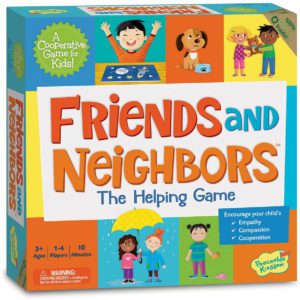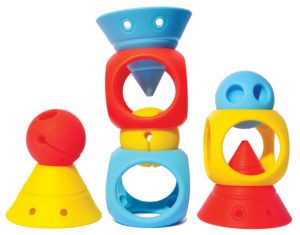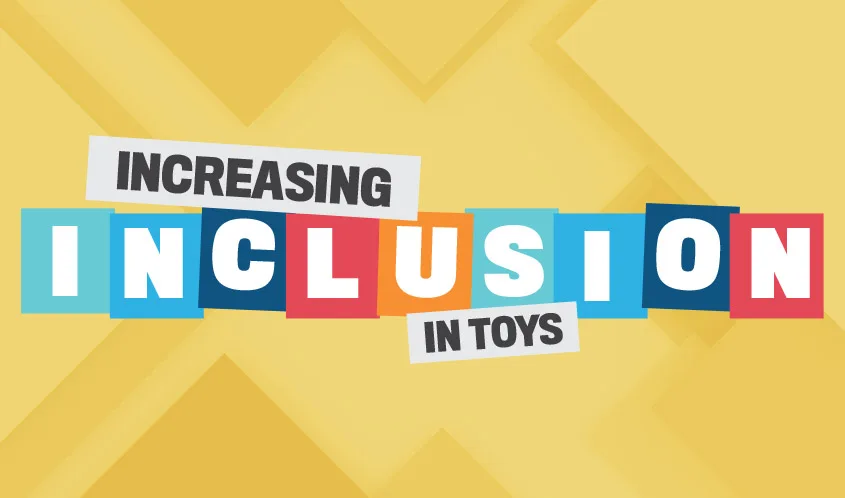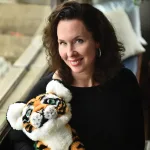by CHARLENE DELOACH, JD, contributing editor
The rising trend of diversity in toys is being met with praise from parents and the media. Toy companies have made great strides toward making toys more visually inclusive, especially in regard to gender and race. Packaging is moving away from pink and blue color schemes and toward more gender-neutral palettes. Dolls now come in a variety of styles, with multiple skin tones, hair textures, and more. Overall, developers, manufacturers, brands, and buyers are gravitating toward progression in play.
However, one area that continues to lack clarity and conciseness is the concept of inclusivity in toys related to ability — not just for gender, ethnicity, or physical attributes. In other words, toys should not focus solely on diversity that one can see, but also on the diversity among those with cognitive and intellectual disabilities.
A 4-year-old kid on the autism spectrum may be ready for a science kit sold to preteens, while a 10-year-old kid with processing delays may only be able to construct a castle marketed to toddlers. It’s no question that age grading is essential for safety considerations, but is it essential to mostly market toys based on age? Manufacturers could also include the developmental skills that their toys provide on the packaging.
One model to note is the “Scholastic concept.” Scholastic, the world’s largest publisher and distributor of children’s books, doesn’t focus solely on grade level or age when matching books to kids — it also provides levels based on the student’s ability.

Some toy companies have already started taking on this level of inclusive thinking. Smart Toys and Games lists the cognitive skills its games purport to provide on its website product page, and Peaceable Kingdom, a division of MindWare, has learning skills listed on the packaging of many of its products. Another brand to note is Moluk, under the PlayMonster umbrella. The company’s founder, Alex Hochstrasser, believes that toys should appeal across different ages and leave room for the imagination.
“In my work as a designer and inventor, I consult with specialists from different fields, such as occupational therapy, child development, psychology, etc.,” Hochstrasser says. He references his mentor, who had expertise in the growth and development of kids, as a resource for some of Moluk’s open-ended play designs.

“A good toy should leave room for the child’s imagination and expressiveness. It should allow for various ways to be used,” he says. “The toy should appeal to kids at different ages and accompany them in their development over a long period of time.”
LEGO recently moved away from using the “Juniors” label for its starter-level LEGO brick sets. Instead, it changed to packaging with a large “4+” logo on the box.
“We’re changing the name from ‘Juniors’ to ‘4+’ in order to better help kids and their parents navigate our assortment, ensuring we guide them toward the best possible play experience,” says LEGO 4+ Designer Andrew Hugh Seenan.
For parents with older kids on the spectrum, toys without a focus on age make the toys feel more inclusive. Some parents have a tough time explaining to their kids why they are buying “junior” toys, and kids want to play like their neurotypical classmates — even if they are older than their classmates.
While brands should continue to design and develop toys that are diverse and inclusive, there are immediate changes that they should consider. For example, consumers could “shop by skill” and not just “shop by age” on e-commerce websites. Product packaging can include not only kids of various ethnicities, but also kids of various ages to show the timeless concept of the toy. Toy packaging could state the lowest possible age for safety and then include symbols, levels, or concepts to show the stage of development the toy is best for. This lets parents focus on the developmental needs of their kids and what the toy provides to meet those needs.
Though the toy industry is challenged right now in so many ways, manufacturers can use this time as an opportunity to regroup and think about the future. As the world changes, toys should change, too — and the world is more diverse than ever. Rather than focus on toys for 3-5-year-olds or products for preteens, let’s focus on toys for developmental levels, cognitive concepts, and specific skills.
As we move forward in this next decade of toy development, let’s think outside the box — not just for the toy itself, but for those who are playing with them for years to come.
This article was originally published in the June 2020 issue of the Toy Book. Click here to read the full issue!


